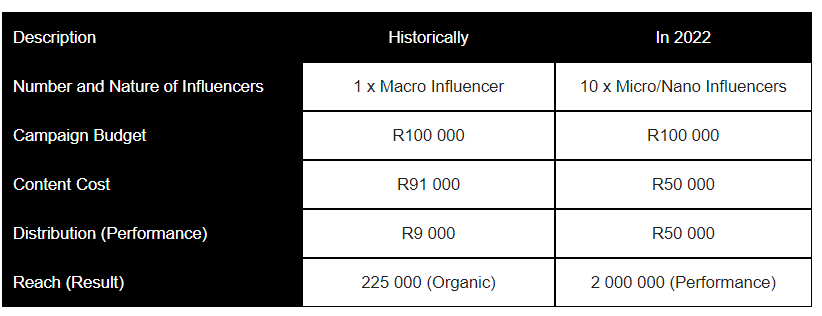#BizTrends2023: Add the nano-influencer to your marketing arsenal

While that is all fundamentally correct, we’re increasingly seeing a shift in the trend of who brands consider to be influencers that are worthy of their interest and investment.
Enter the nano-influencer!
On the surface, a nano-influencer looks like a regular social media user who shares pictures and videos to Instagram, Facebook, or TikTok, just like the rest of us, and they’d probably be the last person to call themselves an influencer.
However, while they probably have fewer than 3, 000 followers, when they talk, their followers listen. They engage. And they trust who they’re hearing from, viewing a recommendation or advocacy from them for a product or brand as highly reliable.
This is the reality of marketing with nano-influencers, and it’s an increasingly powerful (and comparatively more affordable) avenue of access to a target audience. And when it comes to the benefits of this growing trend within influencer marketing, the reality is, there are many:
- Accessible for all brands. Because nano-influences are motivated by sharing what they’re passionate about with an audience that loves to hear it, being offered the opportunity to work with a brand or receive products to review is often considered a bonus. Not only are they less likely to charge high fees for their activity, but if your brand aligns to theirs, they truly appreciate the opportunity to work together.
- Lower cost = more influencers. As a result of the increased affordability of nano-influencers, your brand’s marketing budget can go further, meaning you’ll probably be likely to work with more of them at a time. Obviously, it remains important that you align with influencers that are an authentic allegiance with your brand, but working with more of them improves your reach and enables you to cover more audience segments in a single campaign.
- A higher ROI. Brian Solis, the principal analyst at Altimeter Group, reported data from research that demonstrated that only 32% of consumers follow big influencers, compared to 70% who say they are influenced by family members or friends online. Similarly, smaller influencers are found to have 60% higher engagement rates than those with larger followings, meaning that they’re not only a valuable source of genuine and powerful advocacy for your brand, but you’re likely to get a better ROI as well.
- Niche audiences are more accessible. Nano-influencers aren’t trying to be everything to everyone, so they tend to focus on fewer topics, sharing things they’re genuinely interested in, which reflect their personality, and growing a following of people who share the same views.By finding the right nano-influencer with the right audience and interests (which shows how important consumer data metrics are when choosing who to work with, as well as the value of collaborating with a business that specialises in connecting brands to the right people), you can partner your brand with someone who has a passion for a topic or product that you can tap into – and that’s where the magic happens!
- Paid media can scale nano-influencer content. Because nano-influencers are more relatable than macro-influencers, sharing brand messaging with authenticity, it makes sense for brands to invest in paid media alongside their content creation.Since it’s not guaranteed that every piece of content will be seen by their following, a paid media strategy amplifies the overall engagement by increasing its visibility and ensuring the content (and your brand) reach targeted audiences beyond the influencer’s following, with a message that feels authentic and less like an advertisement. This balanced split between content and distribution is what ultimately ensures a better ROI, as evidenced by the example in the table below:

It’s important for brands to note that when it comes to the growing trend of using nano-influencers in influencer marketing, it’s not the size of their audience that matters. Rather it’s the influencer’s consumer metrics that should be the focus, which heightens their ability to link real brand fans into topical brand conversations, while ensuring authenticity.
As the need to prove ROI and value for every cent spent on marketing grows, and with the evolution of influencer marketing into less of an if, but a how, for business and brands globally, it’s fast-becoming the smart strategy to partner with real people who have a smaller, more loyal following, and whose advocacy will ultimately mean more for both your brand and your bottom line.




















